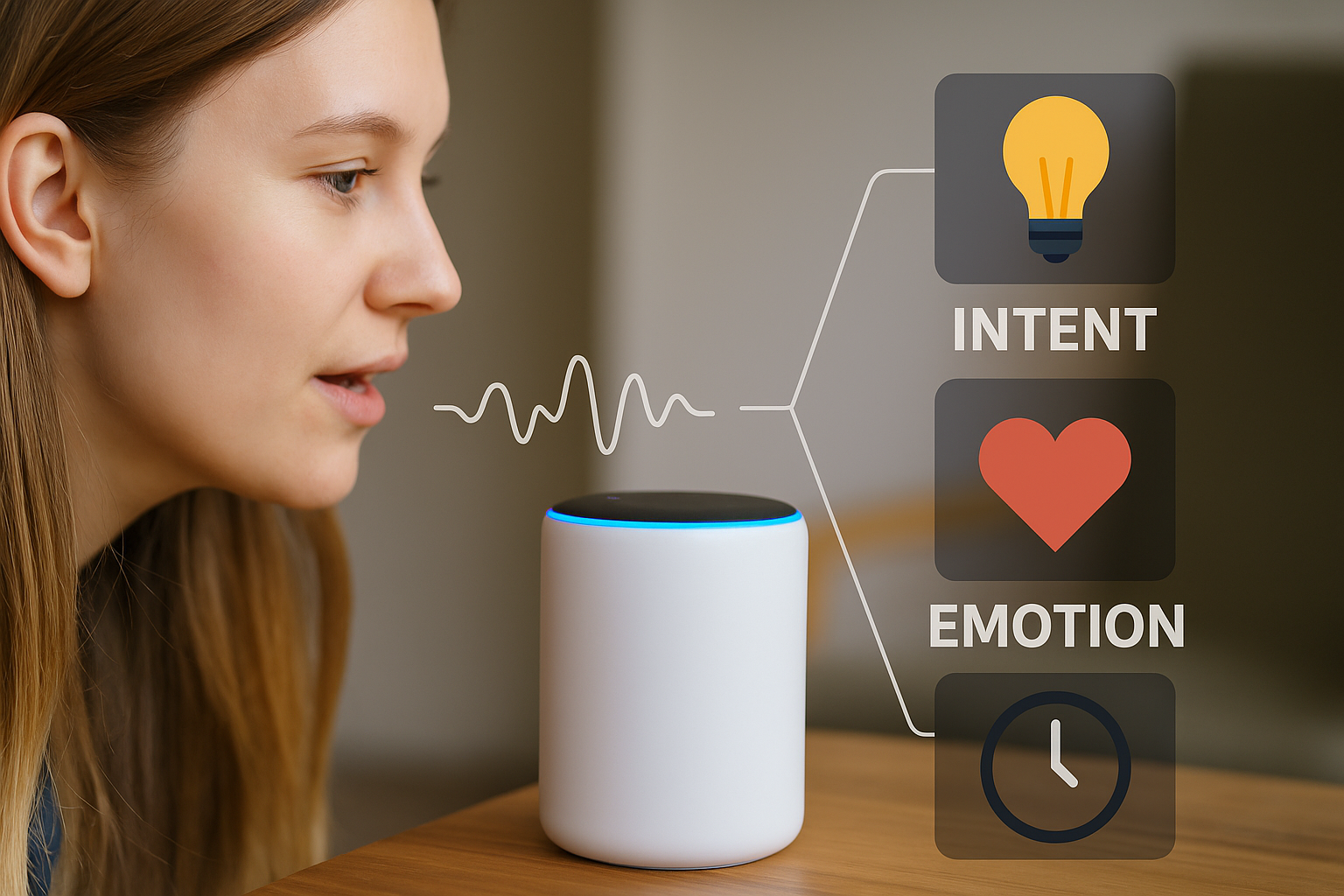
Introduction
Voicebots in Our Daily Lives
Whether you’re asking Alexa to play your favorite song or checking your bank balance through a smart assistant, voicebots are now part of everyday life. But what separates a helpful voicebot from a frustrating one? The answer lies in context. Without it, even the smartest voicebot is just a parrot — repeating commands without understanding.
Why Contextual Understanding is Crucial
A conversation is more than just words. It’s about tone, past interactions, and the underlying purpose of what we say. When a voicebot understands intent, recognizes emotion, and remembers conversation history, it becomes far more human and helpful.
What is Voicebot Context?
A Simple Explanation
Voicebot context is the ability of a system to understand not just what is said but also why it’s said, how it’s said, and what’s been said before. Think of it as the memory, empathy, and intelligence of the bot.
The Key Elements of Context
Intent Recognition
Knowing what the user wants — even when it’s not clearly stated.
Emotional Understanding
Picking up on how the user feels through tone, language, and phrasing.
Conversation Memory
Remembering what was said earlier to avoid repeating or losing track.
Importance of Intent Recognition
What Does the User Really Want?
Users aren’t always clear. Someone might say, “It’s cold in here,” when they actually want the heater turned on. A context-aware bot understands this implicit intent.
Handling Ambiguity in User Input
Words like “this,” “that,” or “it” need context. If a user says, “Order it again,” a smart voicebot recalls the last ordered item and proceeds — no extra questions needed.
Role of NLP in Intent Detection
Natural Language Processing (NLP) allows bots to interpret phrases, slang, and even broken grammar to figure out what users mean, not just what they say.
Why Emotion Matters in Voicebot Interactions
Emotion as a Communication Signal
In human conversations, how you say something can be more important than what you say. A voicebot that detects emotion can react accordingly — calming down angry users or celebrating with happy ones.
Use Cases: Angry, Confused, or Excited Users
-
Angry: Escalate to a human agent
-
Confused: Offer more explanation
-
Excited: Respond with enthusiasm
Benefits of Emotionally Aware Voicebots
Emotionally intelligent bots build trust, reduce customer churn, and offer more personalized interactions.
The Role of Conversation History
Building Memory in Voicebots
Memory transforms bots from dumb responders into intelligent assistants. It lets them remember preferences, recent complaints, or previous instructions.
Personalized and Seamless Conversations
When a bot recalls you prefer vegetarian options or that you canceled a service last week, it feels human. That’s the magic of context.
Use Cases: Customer Service and Smart Assistants
-
Customer Service: Faster issue resolution by remembering ticket history
-
Smart Assistants: Better scheduling and reminders based on past interactions
How Context Enhances User Experience
Human-Like Conversations
Context gives conversations a flow, making them less robotic and more like talking to a friend.
Increased Efficiency and Satisfaction
Users don’t want to repeat themselves. With context, bots answer quicker and more accurately.
Reduced Friction and Repetition
No more saying, “I just told you that!” Context-aware bots get it the first time — or at least, act like they do.
Real-World Examples of Context-Aware Voicebots
Alexa, Google Assistant, and Siri
These assistants are great at remembering routines, preferences, and follow-up questions.
Industry Use Cases
-
Healthcare: Bots remember patient history for smarter recommendations
-
Banking: Recognize spending patterns and transaction history
-
Retail: Personalized upselling based on shopping behavior
Technologies Powering Contextual Voicebots
Natural Language Understanding (NLU)
The engine behind intent and meaning extraction.
Sentiment Analysis Engines
These tools analyze tone and choice of words to detect mood.
Contextual Memory Models
AI models like RNNs or Transformers store past dialogue for future use.
Challenges in Building Context-Aware Voicebots
Privacy and Data Security
Storing conversation history and emotional data? You need strong encryption and transparent policies.
Technical Limitations and Errors
Emotion detection isn’t perfect. Bots may misinterpret sarcasm or subtle tones.
Ethical Concerns with Emotional Analysis
Do users even want bots reading their emotions? Consent and transparency are key.
Best Practices for Designing Contextual Voicebots
Prioritize User Intent Over Exact Keywords
Instead of reacting to “book flight,” understand phrases like “I need to get to New York next weekend.”
Integrate Emotional Cues
Use voice modulation and empathetic responses — even if it’s text-to-speech.
Enable Memory Across Sessions
Let bots remember recurring users and past conversations to enhance long-term engagement.
Voicebot Context and Multilingual Users
Handling Language Switches Mid-Convo
Multilingual users may start in English and shift to Hindi or Spanish — bots should handle that gracefully.
Emotion and Intent Across Cultures
Culture affects tone and phrases. A context-aware bot must adapt to nuances in expression.
The Future of Context in Voice AI
Smarter, More Empathetic Voicebots
We’re heading toward bots that feel like people — not just talk like them.
Continuous Learning and Adaptation
Voicebots will evolve as they interact more, learning user preferences over time.
Cross-Platform Contextual Syncing
Your smart assistant should know your Netflix preferences just like your shopping history — across devices.
How Businesses Benefit from Context-Aware Voicebots
Improved Customer Engagement
Personalized, natural conversations keep users engaged longer.
Increased Conversions and Retention
Relevant suggestions and empathetic responses boost loyalty and sales.
Cost Savings in Support and Operations
Fewer escalations to human agents, faster resolutions, and happier customers = lower costs.
Getting Started: Tools and Platforms
Voiceflow, Dialogflow, Amazon Lex
These platforms let you build and test context-aware bots — no deep coding required.
Open-Source NLP and Sentiment Tools
Try Rasa, Hugging Face Transformers, and TextBlob to add intelligence to your bot.
Conclusion
Voicebots have evolved from simple command-followers to intelligent, empathetic digital assistants. But without context — understanding intent, emotion, and history — they fall short of delivering real value. The future of voice interaction lies in humanizing technology, and context is the bridge that makes it possible. Whether you’re a developer, a business owner, or just a curious user, embracing contextual AI will define how we communicate with machines in the years to come.
FAQs
1. What is contextual understanding in voicebots?
It’s the ability of a voicebot to understand the user’s intent, emotional tone, and previous interactions.
2. Can voicebots detect user emotions?
Yes, using sentiment analysis and voice tone recognition, they can gauge how a user is feeling.
3. Why is memory important in AI conversations?
Memory helps voicebots deliver personalized, seamless, and efficient user experiences.
4. Which platforms support context-aware voicebots?
Platforms like Dialogflow, Rasa, Voiceflow, and Amazon Lex support contextual capabilities.
5. Is it safe to share data with voicebots?
As long as the voicebot follows strict privacy guidelines and encryption protocols, it can be safe — but always check the provider’s policies.

